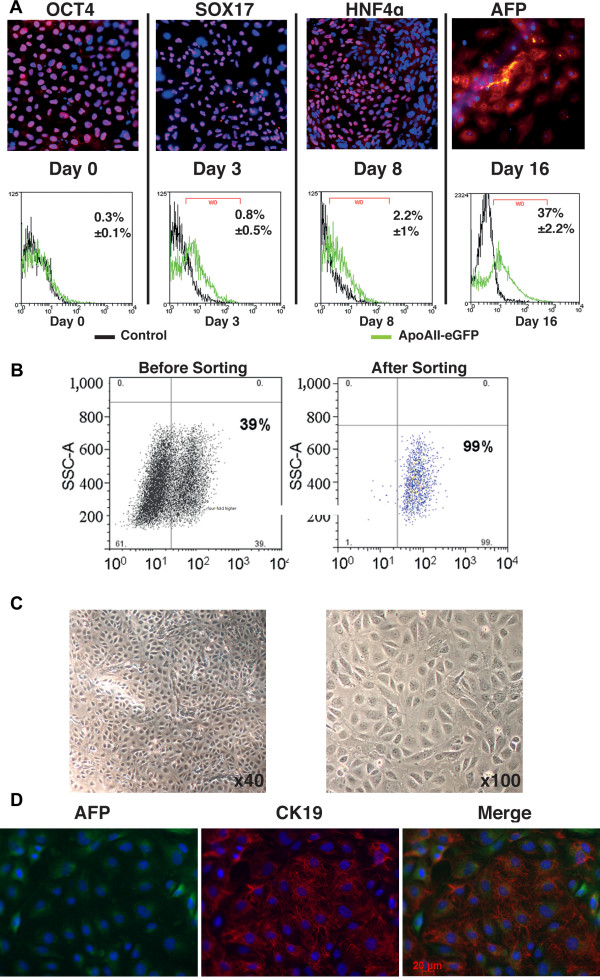Figure 3.
Purification of hepatic progenitors upon differentiation of human embryonic stem cells (hESCs) transduced with apolipoprotein A-II-green fluorescent protein (APOA-II-GFP) lentivectors. (A) Immunofluorescence staining showing expression of cell markers characteristic of hESCs (day 0; octamer-binding transcription factor (OCT)4), endoderm (day 3; sex determining region Y-box (SOX)17), hepatic endoderm (day 8; hepatic nuclear factor (HNF)4α), hepatic progenitors (day 16; α-fetoprotein (AFP) and representative fluorescence-activated cell sorting (FACS) analysis of the same cells showing time course of GFP expression after transduction of hESCs with APO-AII-GFP-integrating lentivector (ILV) (green lines) versus non-transduced cells (black lines). (B) Representative GFP fluorescence profile on day 16 of differentiation, before and after FACS. Left panel: GFP-positive cells of the low/right quadrant, representing 39% of the living cells, were sorted and subsequently analyzed, as illustrated in the right panel, where 99% were GFP-positive. (C) Phase-contrast images of sorted hESC-derived hepatic progenitors, 48 hours after plating. (D) Representative fields of immunofluorescence staining of sorted hepatic progenitor cells treated with α-fetoprotein (AFP) (green) and cytokeratin (CK)19 (red) antibodies.

